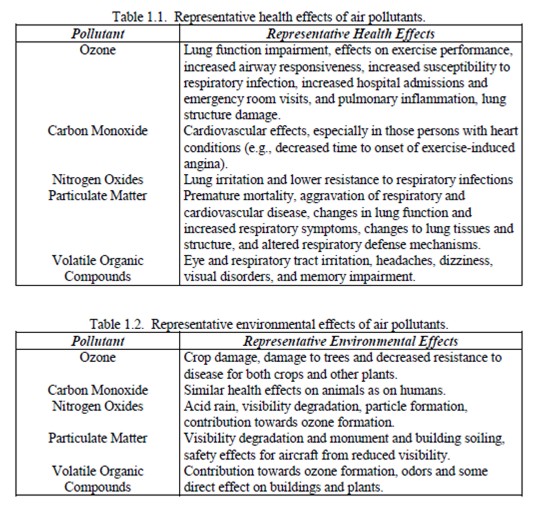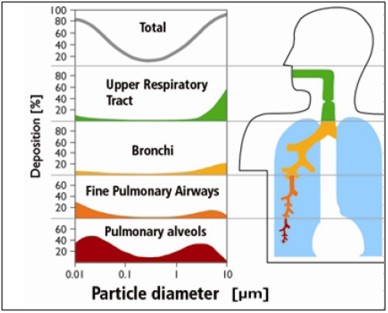Contaminants from Aircraft Engine Emissions
Commercial air travel is expected to double in the next 20 years, which will in turn increase the amount of contaminants emitted to the atmosphere. The following contaminants are emitted during the different phases of operation:
- NITROGEN OXIDES (NOx) – which includes nitrogen oxide (NO) and nitrogen dioxide (NO2)
- CARBON MONOXIDE (CO)
- UNBURNED HYDROCARBONS – which have almost been completed eliminated from the exhaust stream due to newer engine technologies
- SULPHUR OXIDES
- PARTICULATE MATTER (PM) – which leaves the exhaust as carbon black soot
- VOLATILE ORGANIC COMPOUNDS (VOCS) – such as benzene and acrolein
- OZONE (O3)– which is formed from the nitrogen oxides and volatile organic compounds emitted
- SEMI-VOLATILE ORGANIC COMPOUNDS (SVOCS)
- METALS
- NOISE – this contaminant is discussed in the Aircraft Noise section of the ICAO site
- ODOUR
Most of the focus of international efforts have been on the reduction of NOx so far (ICAO has an engin certification standard for NOx which is contained in Annex 16 — Environmental Protection, Volume II — Aircraft Engine Emissions to the Convention on International Civil Aviation). Further assessment of the impacts of some of these contaminants (for example, particulate matter and metals) needs to be conducted in order to assess the risk to human health and to further the goal of reducing emissions.
Besides NOx, ICAO has established limits for emissions of CO and unburned hydrocarbons in Annex 16, Volume II. This volume also contains provisions regarding smoke and vented fuel.
Auxiliary power units are also sources of contaminants. However, they are not certified for emissions and it is difficult to estimate emissions from these sources as manufacturers consider the emission rate information proprietary.
Aircraft engine emissions and auxiliary power units are the only sources under the remit of ICAO.
Contaminants from Airports and Associated Sources
Airports also release contaminants from activities such as:
- Ground service equipment
- Motor vehicles (parking, road traffic)
- Construction
- Boilers
- Generators
- Airport fire training facility
- Food preparation
- Engine testing
- Electricity
- De-icing
- Fuel storage facilities
The contaminants listed above can also been found emitting from airport sources. The VOCs emitted may vary for those emitted by aircraft depending on the fuels used in ground service and road traffic vehicles, and fire training exercises.
Health Effects
Exposure to the contaminants listed above can result in serious health effects. The table presented below lists some of these effects. Local and regional air quality officials are responsible for creating standards to protect human health from the adverse effects of these contaminants.

From: EPA, Evaluation of Air Pollutant Emissions from Subsonic
Commercial Jet Aircraft, p. 1-5.
The following diagram illustrates the percentage of deposition of particulate matter of a specified particle diameter that will reach different segments of the respiratory system.

Source: ICAO Information Paper CAEP-SG/ 20082-IP/05
Environmental Effects
Aircraft and airport emissions can also have serious effects on the environment. These contaminants can affect crop productivity and ecosystem response. In particular, NOx in the troposphere can contribute to ground-level ozone, excess nitrogen loads to sensitive water bodies, and acidification of sensitive ecosystems according to the U.S. Environmental Protection Agency.
Particulate matter contributes to visibility and soiling issues. They play a key role in creating the hazy smog often found surrounding cities on sunny, warm, dry days.
VOCs also contribute to ozone formation and damage plants, crops, buildings and materials when released at high levels.
ICAO Initiatives to Improve Local Air Quality
One the initiatives that ICAO has undertaken to improve air quality is the creation (and continued updating) of the document Airport Air Quality Guidance Manual. The manual provides guidance to assist with the assessment of airport emission sources, emission inventories and emissions allocation. The first step to addressing local air quality is to obtain an accurate estimate of the types and amounts of contaminants being introduced to the airshed. Then efforts to reduce these emissions can be pursued.
ICAO is also promoting numerous mitigation measures to reduce local air quality emissions. These mitigation measures include: technology and standards; operational measures; market based measures; and alternative fuels.
|
